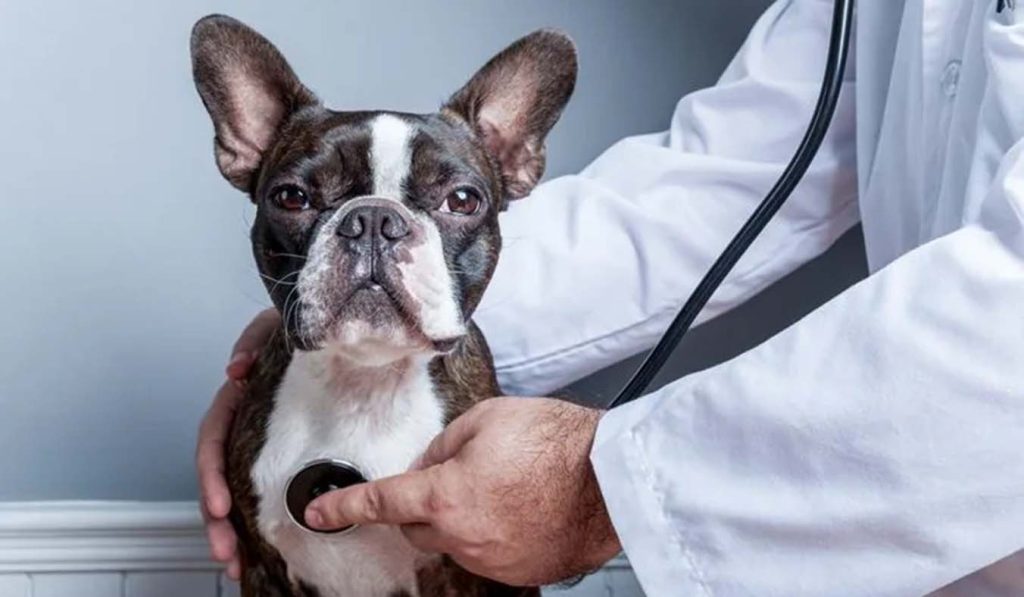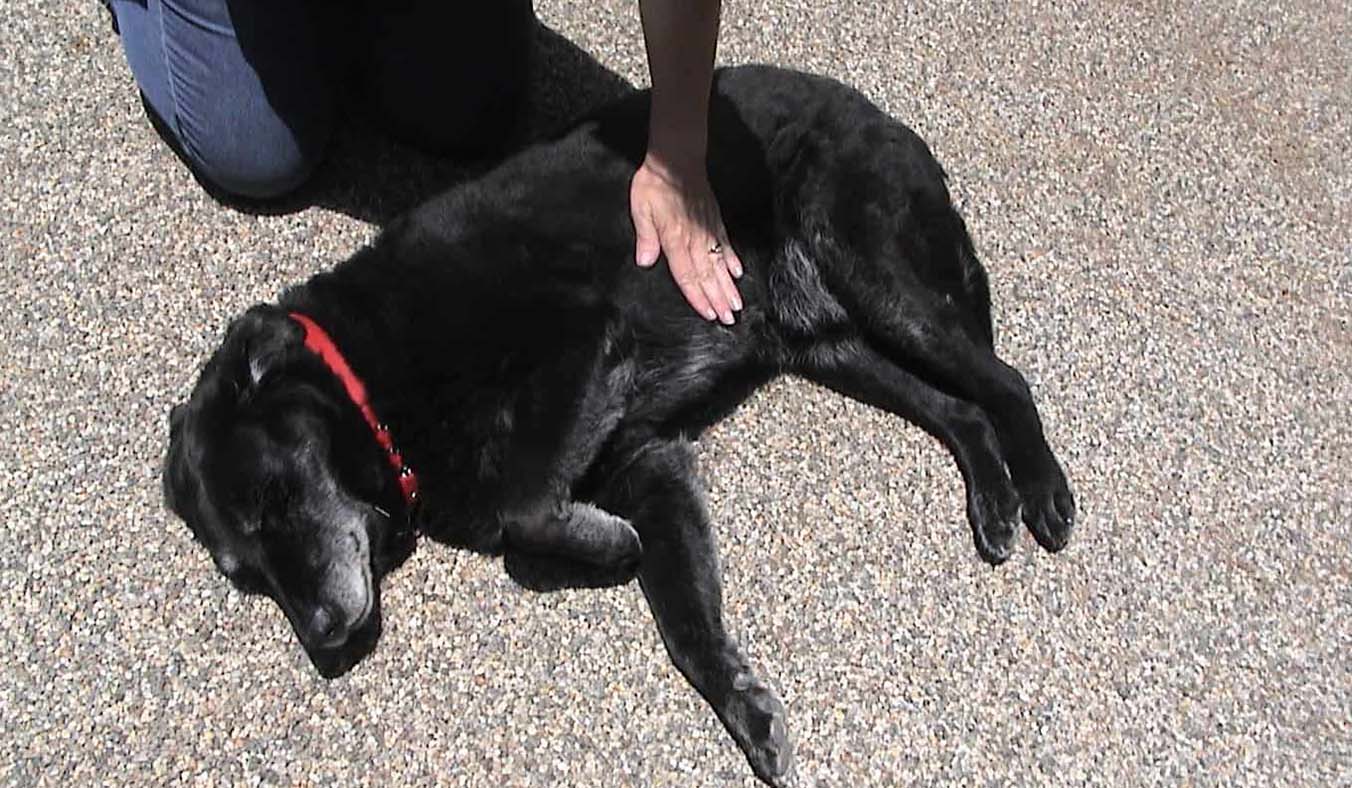Witnessing a pet faint can be a frightening experience for any pet owner. However, knowing what to do in such a situation can make a significant difference in your pet’s outcome. Here are four essential steps to take if your pet faints:
1. Check Pulse and Breathing:
When faced with a pet in distress or experiencing fainting, the urgency lies in swiftly evaluating their vital signs. Here’s a detailed approach to conducting this crucial assessment:
- Positioning: Gently lay your pet down on a flat surface, ensuring their body is fully supported. It’s best to place them on their side, as this position allows for easier access to their chest and airway.
- Heartbeat: With a calm demeanor, place your hand over the lower part of your pet’s chest, near the elbow joint. Apply gentle pressure, feeling for the rhythmic beat of their heart. Take note of the regularity and strength of the heartbeat. Alternatively, you can also attempt to locate their pulse by gently pressing your fingers against their inner thigh, where the femoral artery is situated.
- Breathing: While maintaining contact with their chest, observe closely for any signs of breathing. Look for the rise and fall of their chest as they inhale and exhale. You can also hold a small mirror or piece of paper in front of their nose and mouth to detect any airflow. Be patient and attentive, as breathing patterns may be subtle, especially in distressed animals.
- Assessment: If you detect neither a heartbeat nor breathing, or if they are irregular or faint, immediate intervention is imperative. Prepare to initiate cardiopulmonary resuscitation (CPR) to revive your pet, and contact your veterinarian or the nearest emergency animal clinic for further guidance while you proceed with emergency measures.
Remember, remaining calm and focused during this critical moment is essential for effectively assisting your pet and maximizing their chances of recovery.
2. Call the Veterinarian:

As you attend to your pet’s immediate needs, it’s crucial to reach out to veterinary professionals for expert guidance and support. Here’s a detailed approach to this vital step:
- Prompt Communication: Grab your phone and dial your veterinarian’s number or the nearest emergency veterinary clinic without delay. Time is of the essence in emergencies, and swift action can make a significant difference in your pet’s outcome.
- Clear Description: When speaking with the veterinary staff, provide a concise yet comprehensive overview of your pet’s condition. Describe any observed symptoms, vital signs, and recent events leading up to the fainting episode. Be prepared to answer questions about your pet’s medical history, current medications, and any known health issues.
- Follow Instructions: Listen attentively to the instructions provided by the veterinary professional on the other end of the line. They may offer immediate first aid advice or recommend specific actions to take while transporting your pet to the clinic. Follow their guidance meticulously, as they are trained to provide accurate assessments and critical support in emergencies.
- Prepare for Transport: As you await further instructions or assistance from the veterinary clinic, prepare your pet for transportation to the facility. Gather essential items such as a carrier, blanket, and any relevant medical records or medications. Keep your pet calm and comfortable during the journey, minimizing stress and handling with care.
- Emergency Contact: In case you are unable to reach your regular veterinarian or require urgent assistance outside of regular clinic hours, have the contact information for the nearest emergency veterinary clinic readily available. Familiarize yourself with their location and operating hours beforehand to expedite the process during emergencies.
By promptly reaching out to veterinary professionals and following their guidance, you can ensure that your pet receives the timely care and intervention they need to overcome the challenging situation.
3. Transport Your Pet:
Once you’ve assessed your pet’s vital signs and contacted the veterinarian, the next step is to transport them safely to the veterinary clinic. Here’s how to ensure a smooth and secure journey:
- Assess Consciousness: If your pet is unconscious but still breathing and has a pulse, carefully move them to a safe and quiet area, away from any potential hazards. Ensure there are no obstructions around them, such as sharp objects or harmful substances.
- Prepare for Transport: Choose a suitable method of transportation for your pet, such as a carrier or a blanket-lined box. Ensure the carrier is well-ventilated and secure, providing enough space for your pet to lie down comfortably. If using a blanket or towel, gently lift your pet onto it, ensuring their head and body are fully supported.
- Handle with Care: When moving your pet into the carrier or onto the transport surface, handle them with utmost care and gentleness. Avoid any sudden or jerky movements that could cause further distress or injury. Speak to your pet in a soothing tone to help keep them calm and reassured during the process.
- Monitor Vital Signs: While en route to the veterinary clinic, keep a close eye on your pet’s vital signs, including their breathing and pulse. Stay alert for any changes in their condition and be prepared to administer first aid if necessary, following the guidance provided by the veterinary professional.
- Drive Safely: During transportation, drive carefully and avoid sudden stops or sharp turns that could jostle your pet. Keep the vehicle environment quiet and calm, minimizing noise and distractions. If possible, enlist the help of a companion to assist with navigation and provide emotional support for both you and your pet.
- Arrival at the Clinic: Upon arrival at the veterinary clinic or emergency facility, notify the staff of your pet’s condition and provide any relevant information about their medical history and recent events. Follow the instructions of the veterinary team as they assess and treat your pet, ensuring they receive the necessary care and attention without delay.
By following these steps, you can safely transport your pet to the veterinary clinic, ensuring they receive the timely and professional care they need to address the fainting episode and any underlying health issues.
4. Clarify the Situation:

When you arrive at the veterinary facility, it’s essential to communicate effectively with the veterinary staff to ensure your pet receives the best possible care. Here’s how you can clarify the situation and provide relevant information:
- Provide a Detailed History: Give the veterinary team a thorough account of what happened leading up to your pet’s fainting episode. Include details such as any recent activities, changes in behavior, exposure to heat or toxins, and any other relevant events. This information can help the veterinarians understand potential triggers or underlying health issues.
- Describe the Episode: Describe the fainting episode itself, including how it occurred, the duration, and any accompanying symptoms. Note if your pet lost consciousness, exhibited abnormal movements, or showed signs of distress before, during, or after the episode. Be as descriptive as possible to paint a clear picture of what happened.
- Share Medical History: Provide details about your pet’s medical history, including any pre-existing conditions, medications they are taking, and past veterinary visits. Mention any previous episodes of fainting or similar episodes, as well as any treatments or interventions that have been administered in the past.
- Answer Questions: Be prepared to answer any questions the veterinary team may have about your pet’s health, lifestyle, and environment. Provide information about their diet, exercise routine, living conditions, and any recent changes in their behavior or habits. The more information you can provide, the better equipped the veterinarians will be to assess your pet’s condition and develop an appropriate treatment plan.
- Follow Instructions: Listen carefully to the instructions provided by the veterinary staff and follow their guidance regarding further diagnostic tests, treatments, or interventions. Ask questions if you’re unsure about anything or need clarification on a particular aspect of your pet’s care. Collaboration between you and the veterinary team is essential for ensuring the best possible outcome for your pet.
By clarifying the situation and providing comprehensive information to the veterinary staff, you can help them make an accurate diagnosis and develop an effective treatment plan tailored to your pet’s needs. Your proactive approach and open communication are invaluable in ensuring the health and well-being of your furry companion.
By following these four rescue steps, you can help ensure the best possible outcome for your fainting pet. Remember to stay calm and focused during the process, and prioritize your pet’s well-being above all else.



